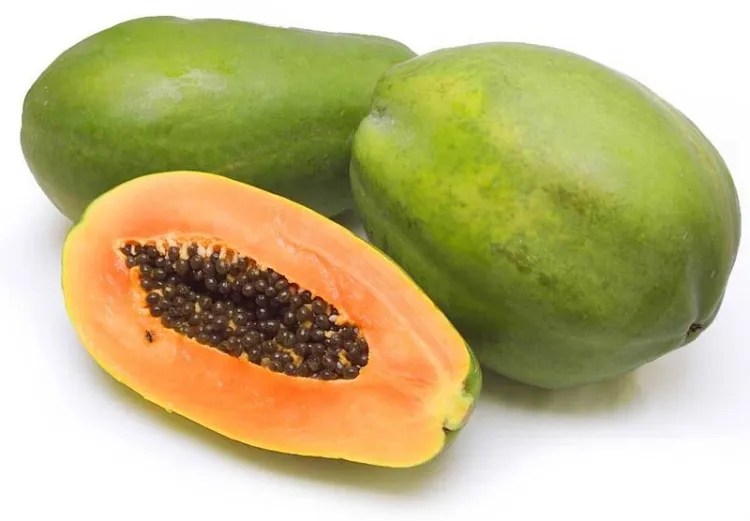Papaya: A Nutritious Tropical Delight...!!!
Papaya, scientifically known as Carica papaya, is a tropical fruit that boasts both deliciousness and nutritional value. Originating from the tropical regions of the Americas, papaya has gained global recognition for its unique flavor and numerous health benefits.

Botanical Description
Papaya trees are large, herbaceous plants that can reach up to 30 feet in height. The leaves are deeply lobed and can grow up to 2 feet long. The fruit itself is pear-shaped and varies in size, typically ranging from 5 to 20 inches in length. When unripe, the skin is green, but it turns yellow or orange as the fruit ripens. Inside, the flesh is soft, orange, and sweet, with numerous black seeds in the center.
Nutritional Value
Papaya is a nutrient-dense fruit, making it a valuable addition to any diet. It is rich in vitamins A, C, and E, as well as folate and potassium. The fruit is also a good source of dietary fiber, which aids digestion. Papaya contains an enzyme called papain, which helps break down proteins and supports digestion. Additionally, papaya is low in calories and fat, making it a healthy snack option.
Health Benefits
The health benefits of papaya are extensive. Its high vitamin C content boosts the immune system and helps the body fend off infections. Vitamin A promotes good vision and skin health. The fiber in papaya aids digestion and helps prevent constipation. Papain, the enzyme found in papaya, has anti-inflammatory properties and can help reduce inflammation in the body. Papaya also contains antioxidants that protect the body from oxidative stress and reduce the risk of chronic diseases.
Culinary Uses
Papaya is incredibly versatile in the kitchen. It can be enjoyed fresh, either on its own or as part of fruit salads. The flesh of the papaya can be used in smoothies, juices, and desserts. It is also a popular ingredient in savory dishes, such as salsas, chutneys, and marinades. In some cultures, papaya leaves are used to make tea, which is believed to have medicinal properties.

Growing Conditions
Papaya trees thrive in tropical climates with warm temperatures and plenty of sunlight. They require well-drained soil and regular watering, especially during dry spells. Papaya trees are relatively easy to grow and can produce fruit within a year of planting. However, they are susceptible to pests and diseases, such as the papaya fruit fly and fungal infections, which can affect their yield.
Varieties
There are several varieties of papaya, each with distinct characteristics. Common varieties include the Hawaiian Solo papaya, which is small and sweet, and the Mexican Red papaya, which is larger and has a more intense flavor. Other varieties include the Sunrise papaya, known for its bright orange flesh, and the Kapoho papaya, celebrated for its high sugar content.
Cultural Significance
Papaya holds cultural significance in many regions where it is grown. In some cultures, it symbolizes fertility and is used in traditional ceremonies and rituals. In Hawaii, papaya is a staple fruit and is often featured in local cuisine. The fruit is also celebrated in festivals and events that highlight its importance to local culture.
Environmental Impact
Papaya cultivation has both positive and negative environmental impacts. Positively, papaya trees can improve soil health by adding organic matter and preventing erosion. They also provide habitat and food for various wildlife species. However, the use of pesticides and fertilizers in papaya farming can negatively impact the environment, including water pollution and harm to non-target species. Sustainable farming practices, such as organic farming and integrated pest management, can mitigate these impacts.
Papaya is a tropical fruit that combines unique taste with significant nutritional value. Its high vitamin and mineral content, along with its health benefits, make it an excellent addition to any diet. Whether enjoyed fresh, used in culinary dishes, or celebrated in cultural events, papaya remains a versatile and cherished fruit. As awareness of its benefits grows, papaya continues to be a popular choice among health-conscious consumers worldwide.
What's Your Reaction?

















